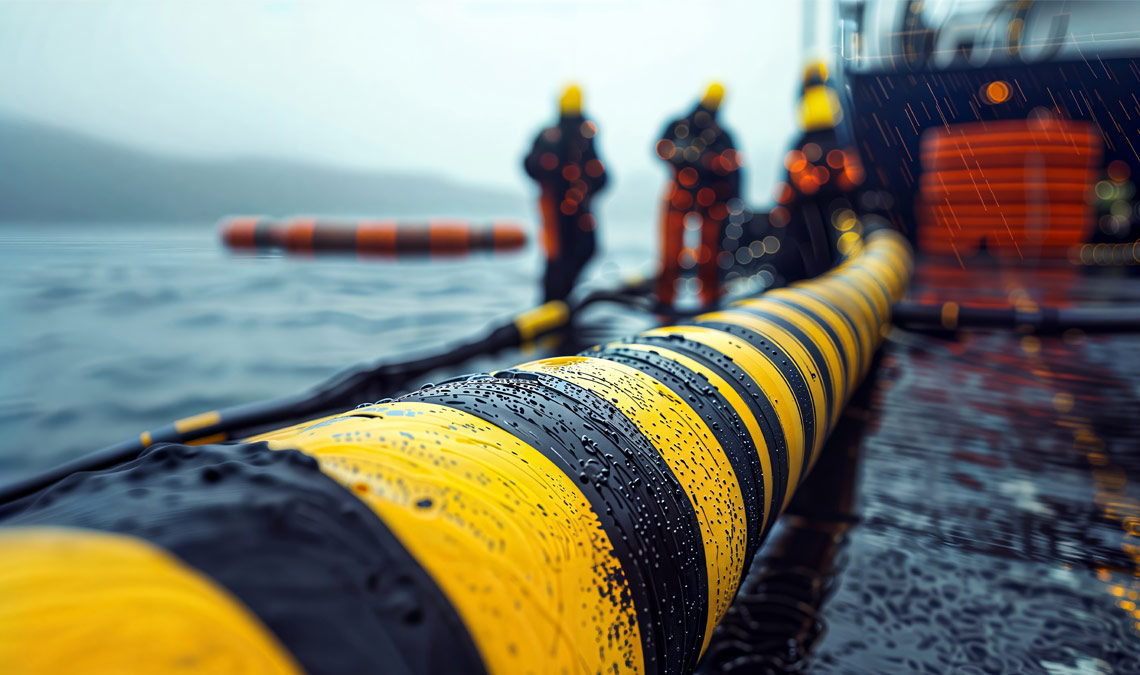The installation of submarine power cables is a highly technical yet essential process that enables reliable energy transmission and global connectivity. As outlined in the Electric Cables Handbook (3rd ed.), this process consists of several key steps, each requiring precision and specialized equipment.
Key Stages of Submarine Cable Installation
Submarine cable projects involve a structured process to ensure efficiency and durability. The key stages include:
- Feasibility Study – Engineers conduct initial assessments using existing survey data, such as seabed maps and tide charts. This helps determine if laying a cable in a particular location is viable.
- Survey – A detailed examination of the seabed is performed using sonar and seismic methods. This helps identify the best route, avoiding rocky areas, shipwrecks, and strong underwater currents.
- Selecting the Right Cable Laying Vessel – Special ships are used to carry and lay the cables. These vessels need to be stable, maneuverable, and equipped with systems to hold cables securely.
- Cable Handling Equipment – To avoid damage, the cable is carefully stored in large coils or drums and unwound with controlled tension. This prevents bends or breaks during installation.
- Shore End Installation – The process starts with securing the cable at the shore, often by burying it in trenches to protect it from waves and human activities.
- Laying the Cable – The cable is carefully deployed along the surveyed route, with adjustments made to ensure it follows the seabed contours smoothly.
- Terminating the Cable – Once laid, the cable is connected to electrical networks at both ends. Specialized engineers handle this phase to ensure proper functionality.
- Testing and Maintenance – Before the cable is put into operation, extensive tests are conducted to check for faults. Routine inspections are also performed over time to ensure longevity.
Technical Challenges and Solutions
Laying submarine cables is not as simple as placing a wire on the ocean floor. Several challenges must be addressed:
- Seabed Terrain: Cables must be laid in a way that avoids unstable areas where they might shift or break. In rough terrain, trenching machines may be used to bury the cables for protection.
- Water Depth and Currents: Deep-sea areas require careful control of cable tension to prevent snapping. Strong currents can push cables off their intended route, requiring real-time adjustments.
- Environmental Factors: Temperature and salinity can affect cable materials, necessitating the use of specialized insulation and coatings to prevent deterioration.
- Repair and Maintenance: If a cable is damaged, it must be located and retrieved using remotely operated vehicles (ROVs). Repairs involve cutting and replacing sections with precise jointing techniques.
Critical Issues and Potential Risks
The criticality of submarine cables cannot be overstated, as they serve as the backbone of global energy and communication networks. However, these cables face significant risks of damage, particularly from submarine activity. Accidental anchor drags, fishing operations, and even intentional sabotage by submarines pose a serious threat to their integrity. If a cable is severed or compromised, it can disrupt entire economies, affecting industries, financial markets, and even national security.
With increasing geopolitical tensions and the growing reliance on undersea cables, ensuring their protection is paramount. Advanced monitoring systems, protective trenching, and international cooperation are necessary to mitigate these risks and preserve the stability of these vital infrastructures.
Conclusion
The installation of submarine cables is a complex process requiring advanced planning, specialized equipment, and precise execution. While the technology continues to evolve, the fundamental principles remain the same: thorough preparation, careful handling, and long-term maintenance ensure that these cables function reliably for decades. As global reliance on undersea cables grows, innovations in installation techniques will further enhance their durability and performance.

